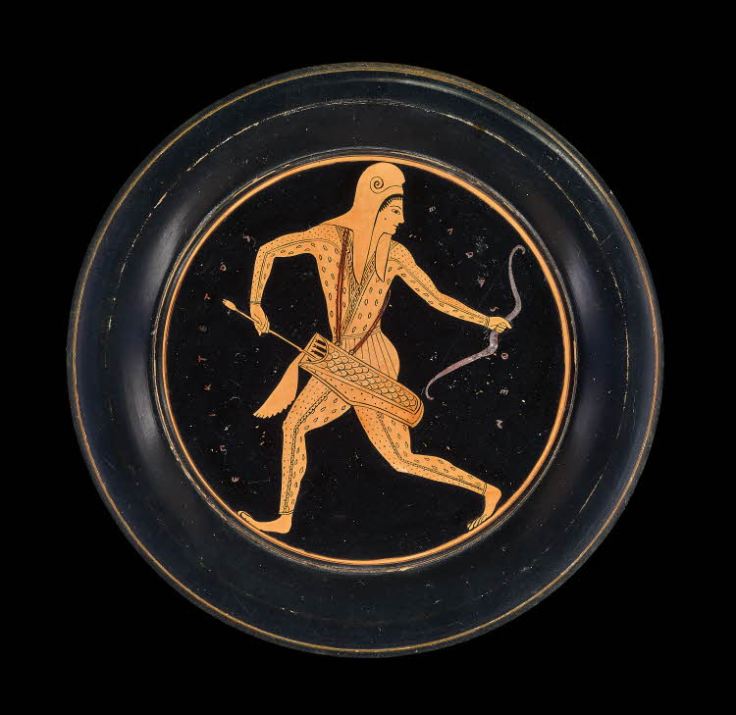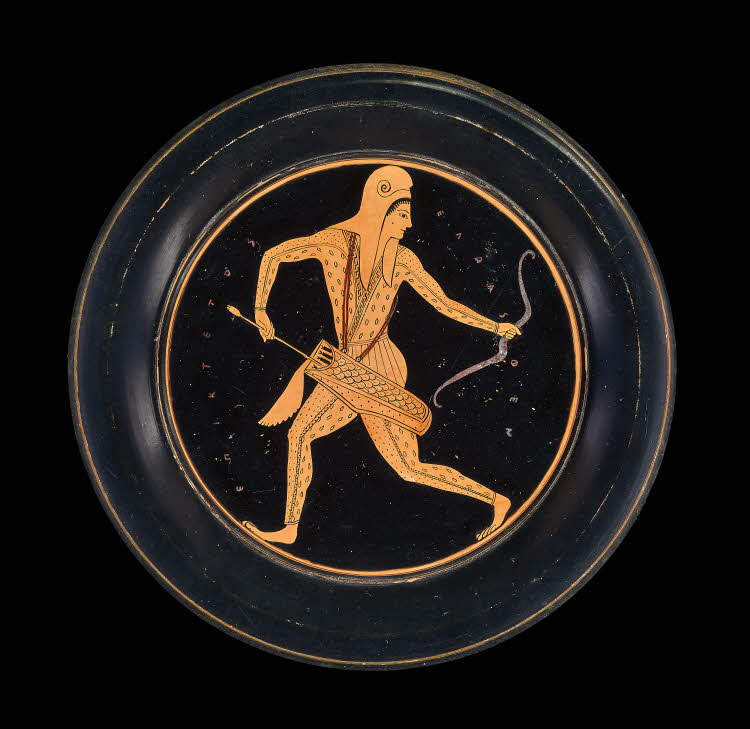I’m a little late to party on this one, but I’ve finally managed to get to the ‘Scythians: warriors of ancient Siberia’ exhibition at the British Museum (the tickets were a gift from a family member). We managed to get an early, week-day slot, and I’m very glad we did – the last few BM exhibitions I’ve been to have been very crowded, and this one really merited up-close attention.
The headline objects which had been used in the publicity were, of course, the gold jewellery and adornments. This included decorations for belts and clothes, earrings, necklaces, and ornate weapons. They were indeed beautiful, and showed incredible workmanship and, in some cases, lovely details of Scythian life.

But the objects I enjoyed most were the ones I hadn’t been expected. Frozen in the ice, hair, textiles, hemp seeds and even cheese survived from over two thousand years ago. The textiles were particularly fascinating, and the magnified images shown next to them showed just how fine the workmanship was. The false beards and hairpieces were also very interesting, and an excellent example of the “probably ritual?” explanation that tends to pop up in archaeological exhibitions when we don’t understand things. Their own art and burials show that Scythian men were clean-shaven and had short hair. Perhaps the false beards provide the answer to why the Greeks usually depicted the Scythians as bearded? Were they always turning up in Greek territory in disguise? (Probably not, but who knows.)

I also, of course, enjoyed the inscriptions. The Scythians left few (if any) inscriptions of their own, but they are of course mentioned by the people who met them. The exhibit showed a few examples of mentions of the Scythians in Greek and cuneiform texts, plus the (obligatory?) quotations from Herodotus. I also enjoyed the Greek plate featuring a Scythian from the British Museum’s own collection – not least because of the small spelling mistake made by the painter (egrasphen instead of egraphsen for ‘wrote’). It was also clearly made for export to the Etruscans (it was found in Vulci, in Etruria, even though it was made in Athens). And so, in fact, it showed knowledge of the Scythians even further afield than the exhibition claimed. Interestingly, the BM’s online catalogue claims that this plate depicts a female figure, probably an Amazon, because it has no beard. Greek depictions of the Scythians were generally bearded (as you can see in this blog post), but as we’ve already said, the exhibition itself made clear that the Scythians were actually clean-shaven – so who knows what exactly was intended by the artist of this piece.

There was one possibly Scythian inscription in the exhibition. The inscription, on the underside of a silver bowl, was listed as ‘undeciphered’, but the description also said that at least one person claims to have translated it. The translation offered is (I think) the same as the one given in the Wikipedia entry.

za(ṃ)-ri ko-la(ṃ) mi(ṃ)-vaṃ vaṃ-va pa-zaṃ pa-na de-ka mi(ṃ)-ri-to // ña-ka mi pa-zaṃ vaṃ-va va-za(ṃ)-na vaṃ.
The vessel should hold wine of grapes, added cooked food, so much, to the mortal, then added cooked fresh butter on.
There was no detail on how this transcription and translation was decided, and I’ve not chased up the publication yet. But there appears to be no consensus on whether this writing is a syllabary, an abugida or an alphabet. I suspect there is not enough here to come to any clear conclusions – perhaps someone else knows more than me?
First two images from the British Museum blog – go there to find out more about the highlight objects of this exhibitions.


Leave a comment